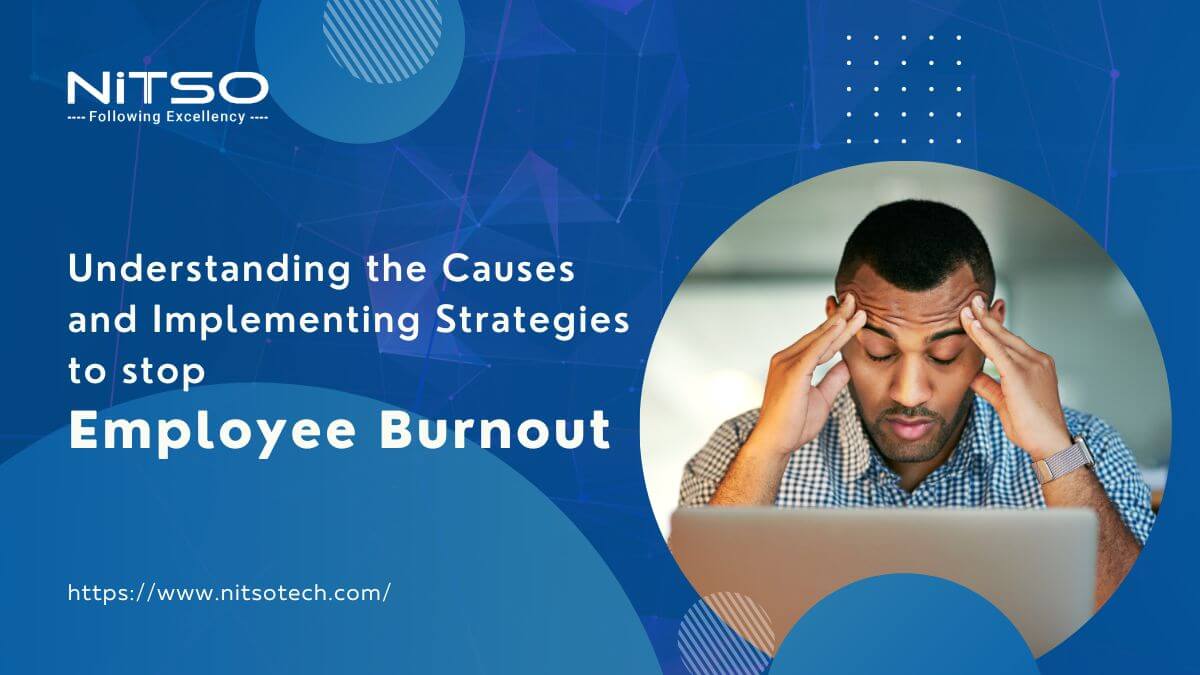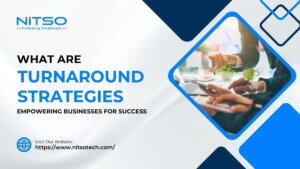Burnout has become an all too familiar term in today’s fast-paced and demanding world. It is a state of physical, mental, and emotional exhaustion caused by chronic work-related stress. The prevalence of burnout has reached alarming levels across various professions and industries, affecting individuals’ well-being and organizational productivity. Understanding the causes of burnout is crucial for developing effective strategies to prevent and address it. In this article, we will delve into the underlying factors that contribute to burnout and explore a range of proven strategies and techniques to mitigate its impact. By recognizing the causes and implementing appropriate strategies, we can create healthier work environments and foster personal well-being, resilience, and fulfillment.
Table of Contents
Two Main Causes of Employee Burnout
Understanding the causes of employee burnout is essential for developing effective strategies to prevent and address this issue. By addressing the root causes of burnout, employers can create a supportive and fulfilling work environment that promotes employee well-being and engagement. The following are some of the most common causes of employee burnout:
1. Work-related factors
Work-related factors can play a significant role in causing employee burnout. The following are some of the most common work-related factors that can lead to burnout:
High levels of job stress
Stress is an inevitable part of any job. However, when the stress levels become too high and unmanageable, it can lead to burnout. Factors that contribute to job stress can include deadlines, a high-pressure work environment, and heavy workloads.
Workload and job demands
Employees who are overworked and under-resourced can quickly become burnt out. When employees are required to work long hours, have heavy workloads, and are unable to take breaks, it can lead to physical and emotional exhaustion.
Lack of control and autonomy
Employees who feel that they have no control over their work and no say in how they perform their job can feel disempowered and disconnected from their work. This lack of autonomy can lead to decreased job satisfaction, emotional exhaustion, and burnout.
Poor management and leadership
Management and leadership play a crucial role in preventing employee burnout. When managers are unsupportive, unsympathetic, or unresponsive to employee needs, it can lead to increased stress, decreased motivation, and burnout.
Workplace stress and culture
The workplace culture can play a significant role in causing employee burnout. A toxic work environment with bullying, harassment, or high levels of competition can lead to feelings of isolation, anxiety, and burnout.
2. Personal factors
While work-related factors can contribute to burnout, personal factors can also play a role. The following are some of the most common personal factors that can lead to employee burnout:
Lifestyle choices
Unhealthy lifestyle choices can contribute to employee burnout. Factors such as a lack of sleep, poor nutrition, and lack of exercise can increase stress levels and lead to physical and emotional exhaustion.
Personality traits
Certain personality traits, such as perfectionism, can contribute to burnout. Employees who are overly critical of themselves or who hold themselves to impossibly high standards can become burnt out quickly.
Family and relationship stressors
Stressors outside of work, such as family or relationship problems, can contribute to employee burnout. When employees are experiencing stress outside of work, it can spill over into their work life, leading to decreased productivity, emotional exhaustion, and burnout.
What are the Strategies to Prevent Employee Burnout and Stress?
In today’s fast-paced work environment, employee burnout has become a widespread problem that can have significant negative impacts on individuals and organizations. Burnout is a state of chronic stress that can lead to physical and emotional exhaustion, feelings of cynicism and detachment, and a reduced sense of personal accomplishment. To prevent employee burnout, it’s important to take a comprehensive approach that addresses both work-related stressors and personal factors. Here are some strategies that can help prevent employee burnout:
1. Workplace Interventions
Addressing Workload and Job Demands
One of the primary causes of employee burnout is excessive workload and job demands. Employers can take the following steps to address these stressors:
- Conduct a workload analysis to identify areas of high stress and excessive demands
- Prioritize tasks and projects to ensure that employees can manage their workload effectively
- Use project management tools and techniques to manage time and resources effectively
- Encourage delegation and team collaboration to distribute workload more evenly
Article you might be intrested in: Recognizing Employees: The Power of Appreciation
Encouraging Work-Life Balance
Achieving a balance between work and personal life is crucial to preventing employee burnout. Employers can encourage work-life balance by:
- Offering flexible work arrangements such as telecommuting, flextime, or compressed workweeks
- Encouraging employees to take breaks and vacations to recharge
- Providing resources and tools such as employee assistance programs, stress-management training, or wellness initiatives
Creating a Positive Work Environment
A positive work environment can help to prevent employee burnout by promoting job satisfaction, motivation, and engagement. Employers can create a positive work environment by:
- Fostering a culture of open communication, trust, and collaboration
- Recognizing and rewarding employee achievements and contributions
- Providing opportunities for professional development and career advancement
- Promoting a healthy work-life balance
Providing Professional Development Opportunities
Offering professional development opportunities can help employees to enhance their skills, knowledge, and abilities, which can lead to increased job satisfaction and motivation. Employers can provide professional development opportunities by:
- Offering training programs, mentorship, coaching, and job shadowing opportunities
- Encouraging employees to attend conferences, workshops, and networking events
- Providing opportunities for employees to pursue higher education or obtain professional certifications
Article you might be intrested in: A Guide to Voluntary Retirement Schemes in HRM
2. Personal Interventions
Prioritizing Self-Care
Individuals can take steps to prevent burnout by prioritizing self-care. This includes:
- Engaging in regular physical activity, such as exercise, yoga, or meditation
- Eating a healthy, balanced diet
- Getting adequate sleep
- Engaging in activities that promote relaxation and stress relief, such as hobbies or creative pursuits
Setting Boundaries
Setting boundaries is crucial to preventing burnout. Individuals can set boundaries by:
- Establishing clear expectations with supervisors and colleagues regarding workload and job demands
- Saying no to requests or tasks that are not aligned with personal goals or values
- Setting aside dedicated time for personal activities and hobbies
Practicing Stress-Management Techniques
Stress-management techniques can help individuals to cope with workplace stress and prevent burnout. Some effective techniques include:
- Deep breathing exercises
- Progressive muscle relaxation
- Visualization and guided imagery
- Mindfulness meditation
The Importance of a Holistic Approach to Employee Well-being
Preventing employee burnout is crucial for both the well-being of individual employees and the success of an organization. To achieve this, it is essential to take a holistic approach to employee well-being that recognizes the interconnectedness of physical and mental health. Here are some ways organizations can take a holistic approach to employee well-being:
- Comprehensive Benefits Packages: Providing employees with comprehensive benefits packages that include mental health resources such as counseling or therapy sessions can help support their mental and emotional health.
- Promoting Healthy Lifestyle Choices: Encouraging healthy lifestyle choices such as regular exercise and healthy eating can not only improve physical health but also support mental well-being.
- Encouraging Work-life Balance: Providing flexible work schedules, remote work options, or offering paid time off can help employees maintain a healthy work-life balance and reduce stress.
- Addressing Workplace Stressors and Culture: Creating a positive and supportive workplace culture, addressing job demands and workload, providing professional development opportunities, and promoting social support and connection can reduce work-related stressors and create a more conducive work environment for employee well-being.
Article you might be intrested in: Boost Employee Engagement: Mastering Work-Life Balance

The Role of Leadership in Preventing Employee Burnout
Employee burnout has become a pervasive problem in today’s workplace, with 23% of employees reporting feeling burned out at work “often” or “always” according to a recent Gallup poll. As leaders, it’s crucial to recognize the impact our actions have on employee well-being and take proactive steps to prevent burnout.
1. Creating a Supportive Work Environment
Leaders can create a supportive work environment by fostering a culture of trust, collaboration, and communication. When employees feel supported, they are more likely to feel a sense of belonging and purpose, which can help prevent burnout.
To create a supportive work environment, leaders can:
- Encourage open communication: Encourage employees to share their thoughts, ideas, and concerns in a safe and non-judgmental space. This can help build trust and foster a culture of collaboration.
- Provide regular feedback: Provide constructive feedback on employee performance regularly, and make sure to recognize their achievements. This can help employees feel valued and motivated to continue doing their best.
- Foster teamwork: Encourage collaboration and teamwork among employees. This can help build a sense of community and belonging, which can prevent feelings of isolation and burnout.
2. Prioritizing Employee Well-being
Leaders can prioritize employee well-being by recognizing that employees are human beings with personal lives outside of work. To support their well-being, leaders can:
- Encourage work-life balance: Encourage employees to take breaks, prioritize self-care, and avoid overworking. This can help prevent burnout and promote overall well-being.
- Provide resources for mental health: Provide resources such as counseling services or mental health days to support employees’ mental health needs.
- Promote physical health: Encourage healthy behaviors such as regular exercise, healthy eating, and taking breaks throughout the workday.
3. Leading by Example
Leaders play a critical role in setting the tone for the work environment. By leading by example, they can model positive behaviors and attitudes that can help prevent burnout.
To lead by example, leaders can:
- Take breaks and prioritize self-care: Leaders should model healthy behaviors such as taking breaks, prioritizing self-care, and avoiding overworking. This can help prevent burnout and set a positive example for employees.
- Encourage a positive attitude: Leaders can encourage a positive attitude and outlook by recognizing employee achievements, promoting teamwork, and celebrating successes.
- Promote work-life balance: Leaders can promote work-life balance by setting boundaries, avoiding overworking, and encouraging employees to take breaks and prioritize self-care.
FAQs Related to Causes and Strategies for Employee Burnout
What causes workplace burnout or stress in managers?
Workplace burnout and stress in managers can be caused by a variety of factors, such as excessive workload, lack of control over their work, poor relationships with colleagues or superiors, job insecurity, and a lack of work-life balance. These factors can lead to feelings of exhaustion, cynicism, and reduced job satisfaction, which can ultimately result in burnout.
Why do allied health professionals have a high burnout rate?
Allied health professionals, such as nurses and physical therapists, can experience high levels of burnout due to factors such as emotional demands, long work hours, and a lack of support or resources. Additionally, these professionals may be exposed to traumatic events or high-stress situations in their work, which can contribute to burnout.
Do employee wellness programs actually work?
Research suggests that employee wellness programs can be effective in reducing stress, improving health outcomes, and increasing productivity. However, the effectiveness of these programs may depend on factors such as program design, employee engagement, and organizational culture.
Is burnout a good reason to quit a job?
Burnout can be a valid reason to quit a job, as it can have significant negative effects on an individual’s physical and mental health. However, it is important to consider other factors such as job security and financial stability before making a decision to leave a job.
How can companies reduce employee stress at work?
Companies can reduce employee stress by implementing policies and practices that prioritize employee wellbeing, such as flexible work arrangements, regular breaks, and employee wellness programs. Additionally, creating a supportive and positive work environment and providing resources for managing stress can also help to reduce employee stress levels.
What is being done to prevent employee burnout in India?
In India, there is a growing awareness of the importance of preventing employee burnout. Companies are implementing a variety of strategies to address this issue, such as providing mental health support, offering flexible work arrangements, and creating a positive and supportive work culture. Additionally, there is a push for government policies and regulations to promote employee wellbeing and prevent burnout in the workplace.








0 Comments